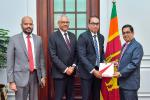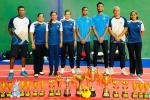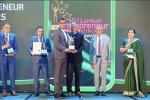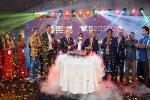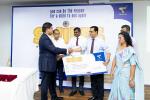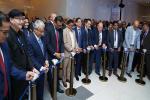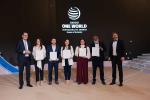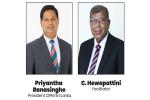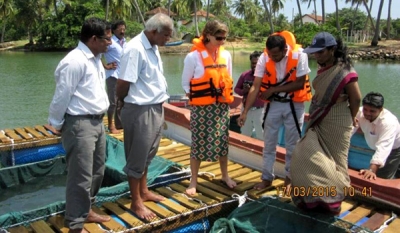Following significant preparatory work to impart know-how and training, the project was ceremonially launched on 17 March 2015 with the stocking of fingerlings in cages.
Sea bass cage culture is an effective and innovative technique introduced as a sustainable economic activity that will contribute to increasing the income of fishing communities while reducing issues arising from over-exploitation and intense lagoon fishery.
Such projects form an integral part of the financial and development assistance that is provided through the EU Support to District Development Programme (EU-SDDP) with a grant totaling EUR 60 million to support the Government of Sri Lanka's thrust for economic and social development in 7 conflict-affected districts covering half a million people.
Ms. Beth Crawford, the Representative of the Food and Agriculture Organization of the United Nations (FAO-UN) in Sri Lanka and her team attended the event, together with Mrs. P. S. M. Charles District Secretary of Batticaloa, Mr. Neduncheliyan Director Planning/District Secretariat Batticaloa, Mr. Thavarajah Divisional Secretary Manmunnai North, Mr. Ravikumar Aquaculturist National Aquaculture Development Authority of Sri Lanka (NAQDA), Mr. R.C. Croos Assistant Director Department of Fisheries and Aquatic Resources (DFAR) Batticaloa, Mr. B.M.W. Bandara Environmental Officer of the Central Environmental Authority,
In the context of the project, Ms. Libuse Soukupova, Head of Operations of the Delegation of the European Union to Sri Lanka and Maldives said "Fisheries are vital to the Sri Lankan economy and the wellbeing of these communities.
This project reflects EU’s long-term commitment to Sri Lanka and ensures that funds are placed where they are most needed.
We hope to be able to create the conditions necessary to improve the lives of the people".
Prior to the launching ceremony, extensive technical and economic training was given to the fisher families participating in the project.
The ‘Navalady Aqua Culture Lagoon Fishermen Society’ was constituted to ensure the identity of the fisher group and sustainability of the initiative.
Training provided included daily management practices, cage construction, selecting suitable species of fish, fingerling counting, feeding, grading and harvesting techniques as well as book keeping and financial recording and evaluation methods.
Under the EU-SDDP, FAO is also planning to establish a finfish hatchery in the Batticaloa District to meet fingerling availability for sea bass culture and its future expansion, and also plans to replicate a similar project in the Puttalam District as well.
"Rearing fish in cages is an innovative activity which ensures that valuable natural fisheries resources are maintained and that fisher families get a better income for their investment” stated FAO’s Representative Ms. Crawford.
Sea bass fish are cultured in floating cages in a brackish water body where the structure is kept floating by special floats.
Ten sea bass cages are expected to produce around 10 metric tons of good quality sea bass annually, generating an average annual income of about Rs.500,000 per fisher family.
The fishing families in Navalady including women and youth were encouraged to form a society through which they could receive training and continue the activity on their own under the supervision of the NAQDA.
“Our main income source is fishing in this lagoon. We thank the European Union for providing funds and making it possible for us to engage in Sea Bass cage culture in our village, which will help us have a more secure income source” stated one of the beneficiaries, Mrs. Nandhini Manikkam of Navalady, Batticaloa.
Within the EU-SDDP framework, FAO is supporting coordinated income generation activities targeted at vulnerable communities, female headed households, disabled persons, and those in remote areas.
Furthermore, FAO is initiating, re-establishing and expanding the livelihoods of the above groups through the provision of equipment, new technology, skills and productive assets.
Photo Caption
1.) Mr. Kapila Wickramasinghe, Regional Project Coordinator-East addressing the gathering.
2.) Fishing community in Navalady, Batticaloa attending the launch.
3.) FAO officials stocking fingerlings in cages.
4.) Mrs. Rohini Singarayer ,FAO Project Manager for SDDP observing fingerlings together with Mr. Mahinda Kulatunga, Consultant for Fisheries and Mr. Kapila Wickramasinghe, Regional Project Coordinator of East.
5.) Ms. Beth Crawford- Representative of FAO-UN in Sri Lanka and Maldives stocking the fingerlings in cages.
6.) Sea Bass cages under construction at the Batticaloa Lagoon.
7.) Mr. Giuseppe Bronzoni, Chief Technical Adviser and the FAO team heading towards the stocking of fingerlings.
